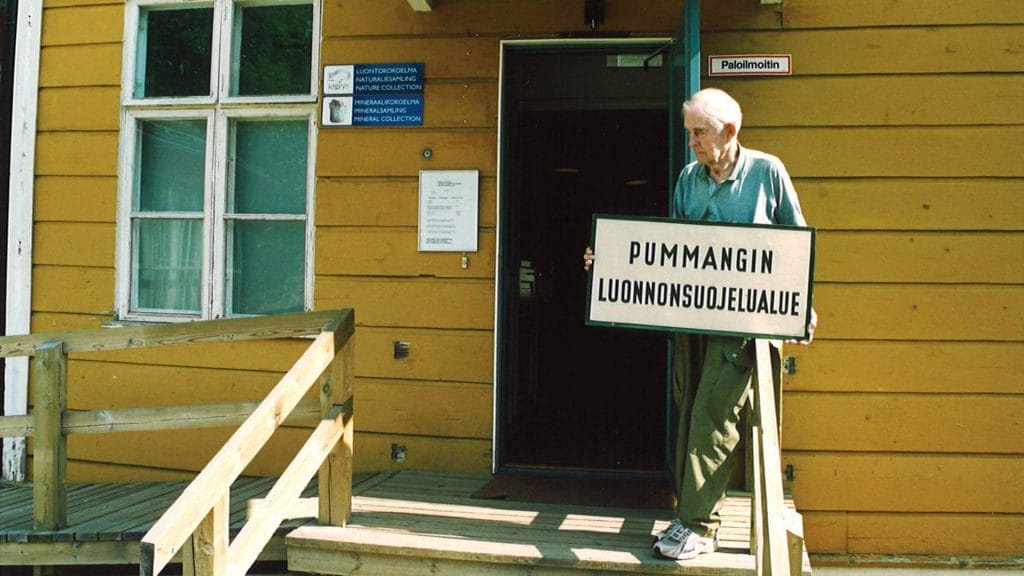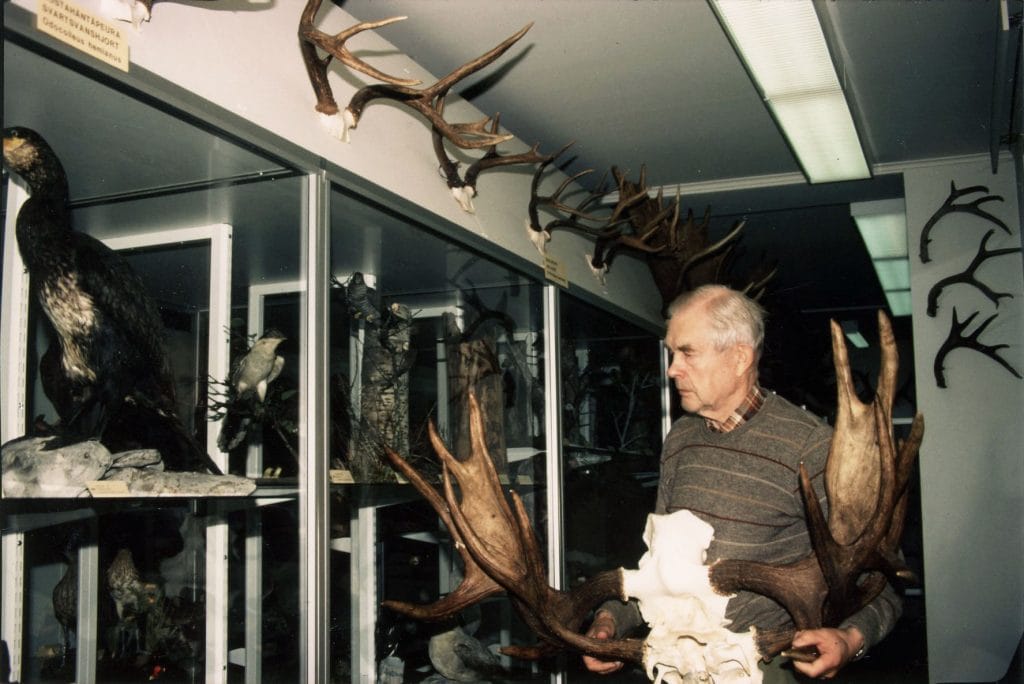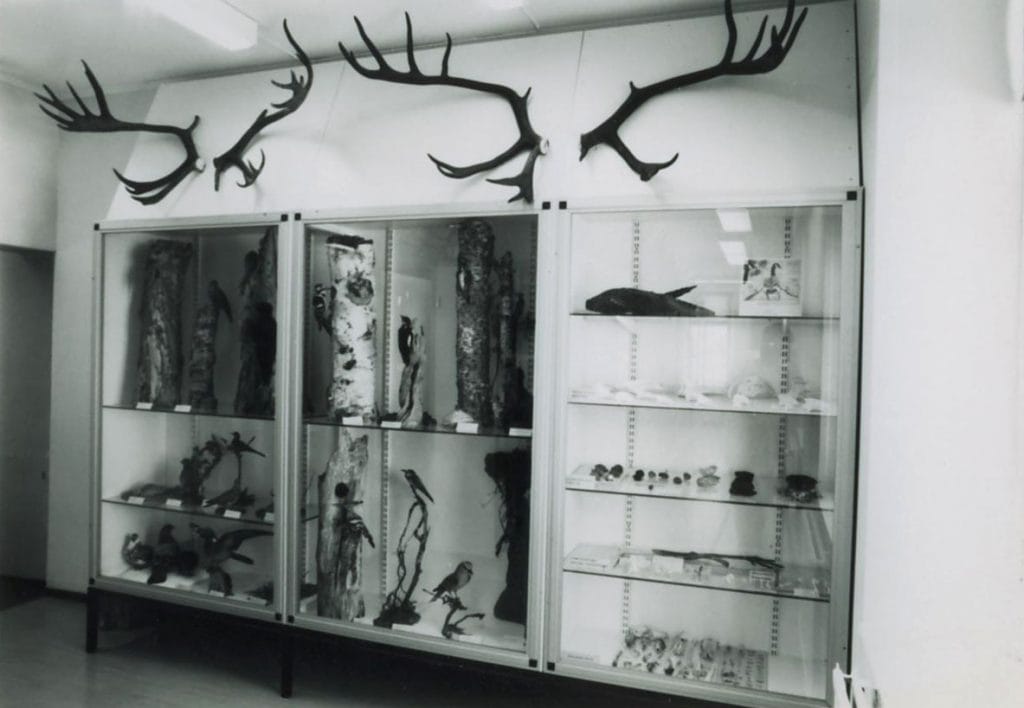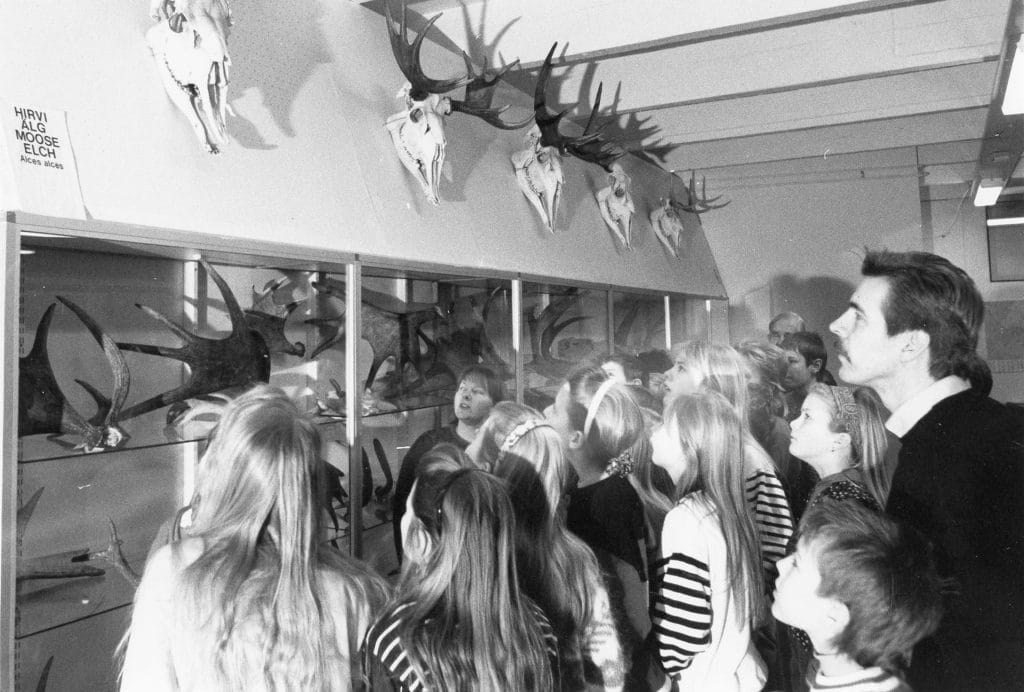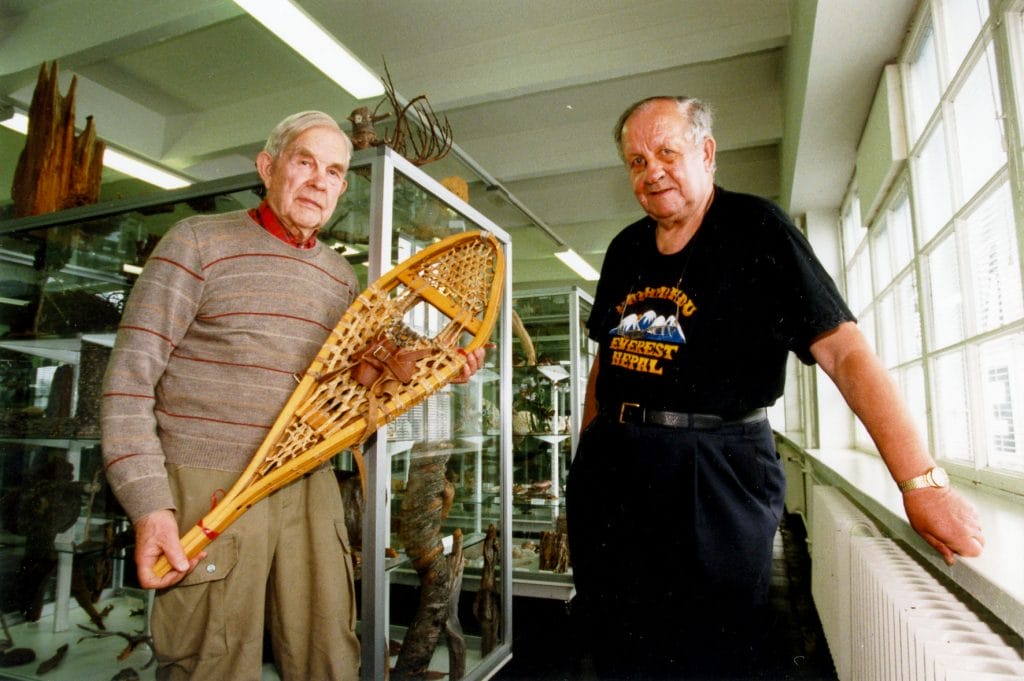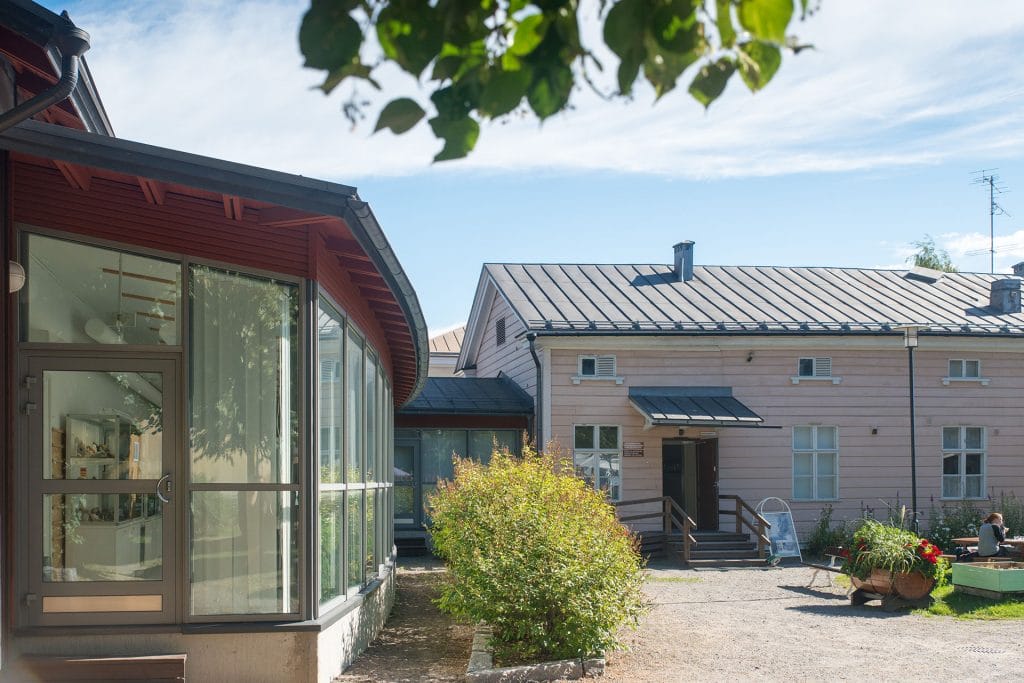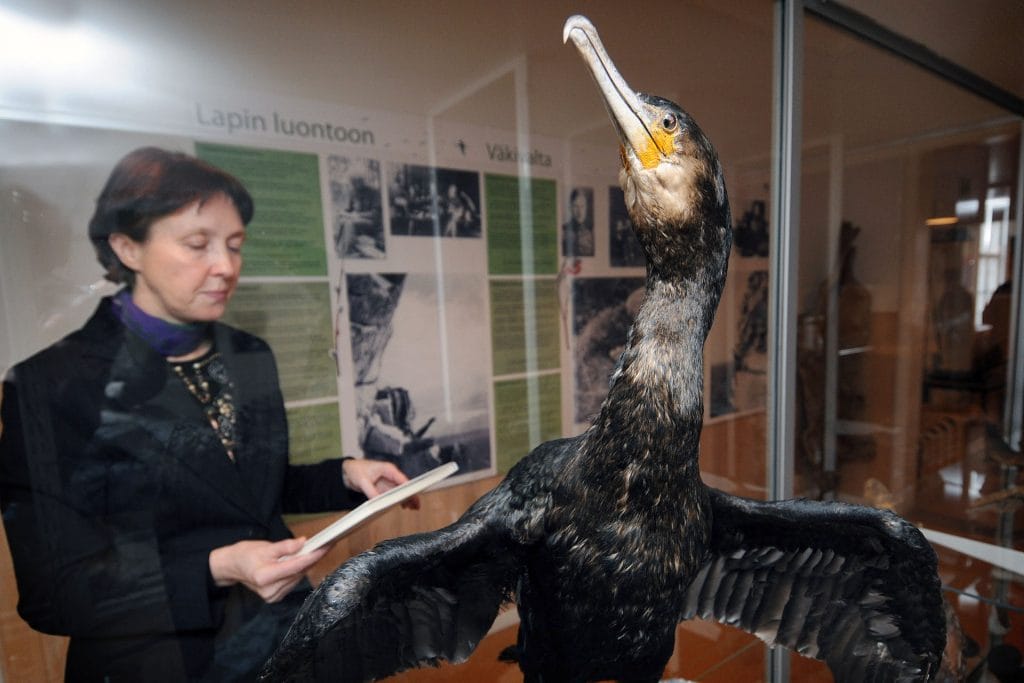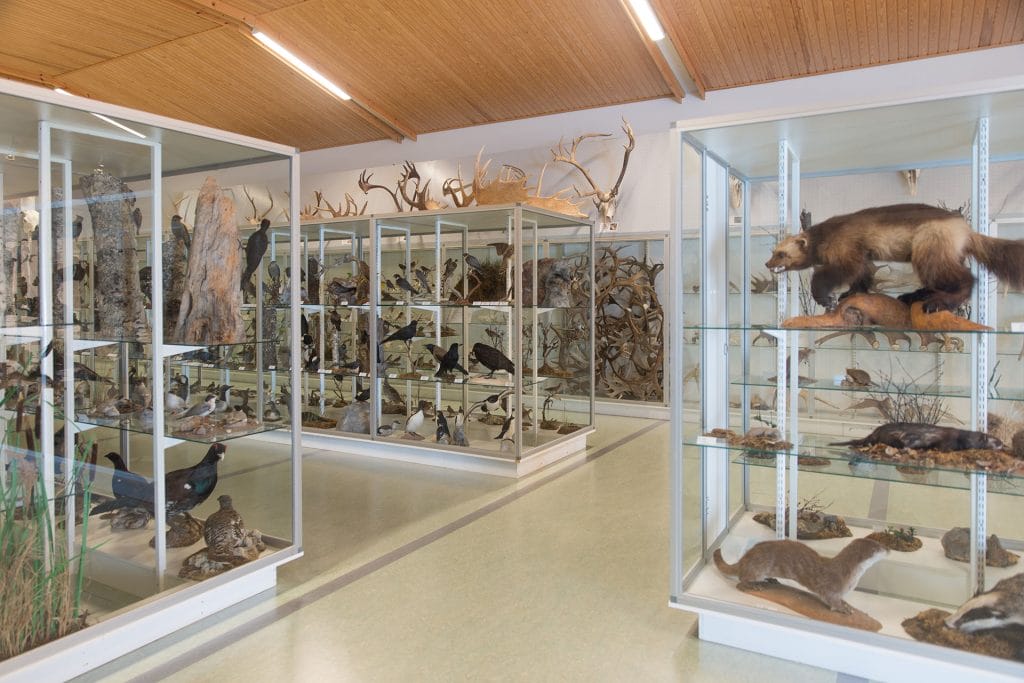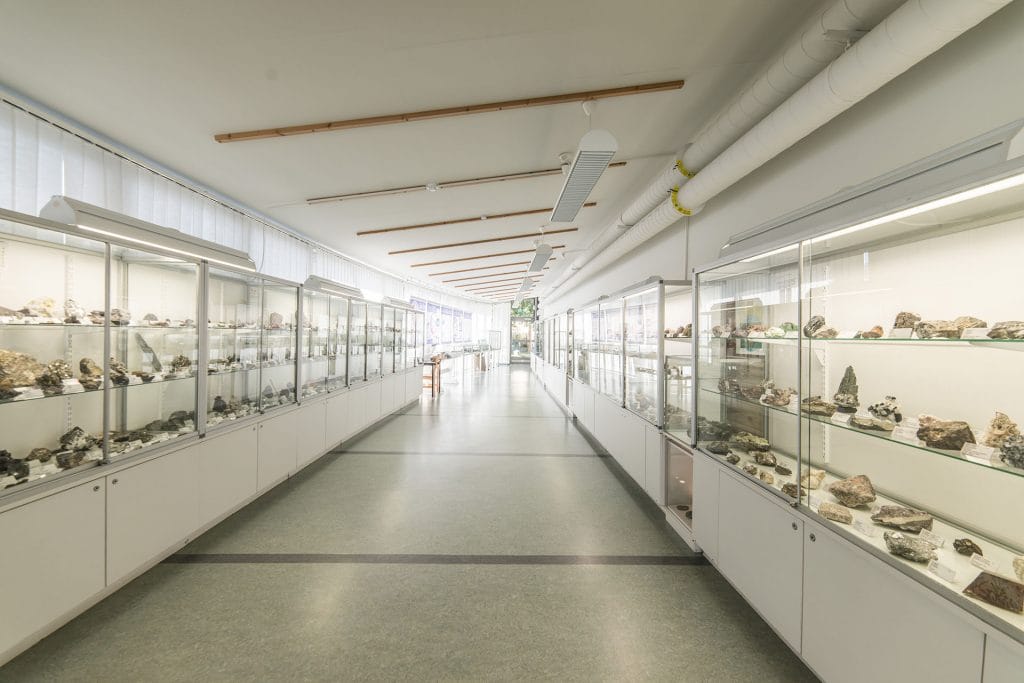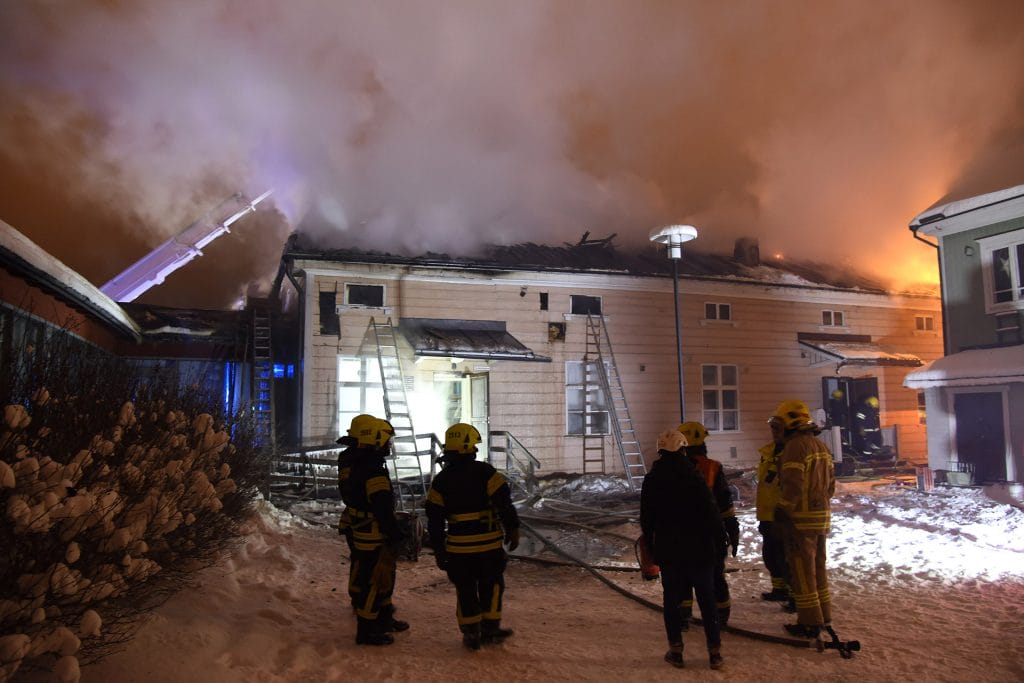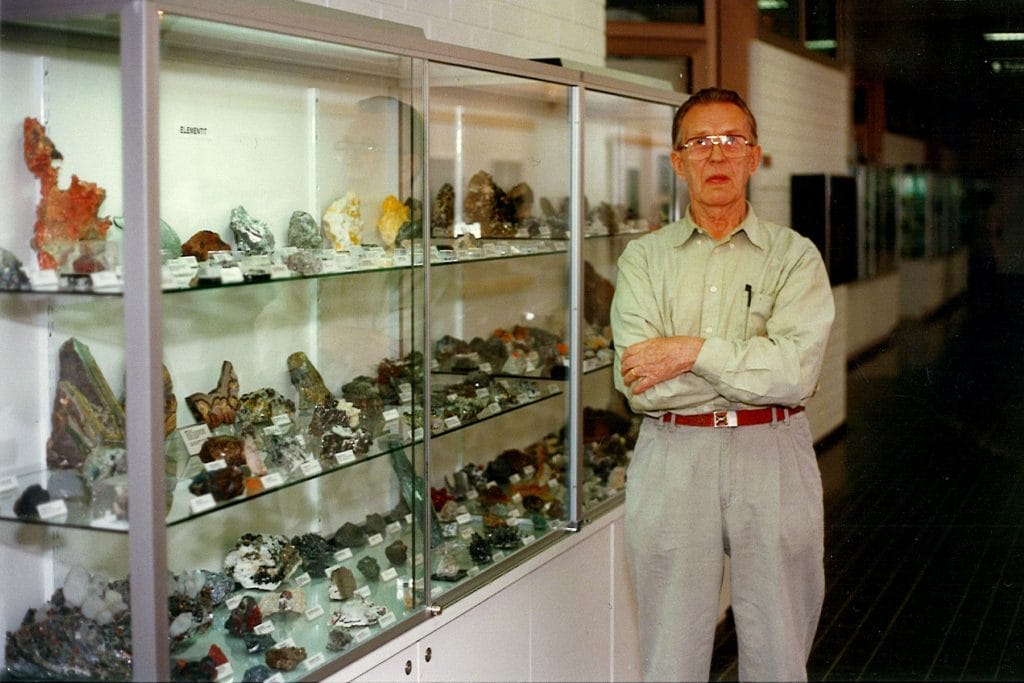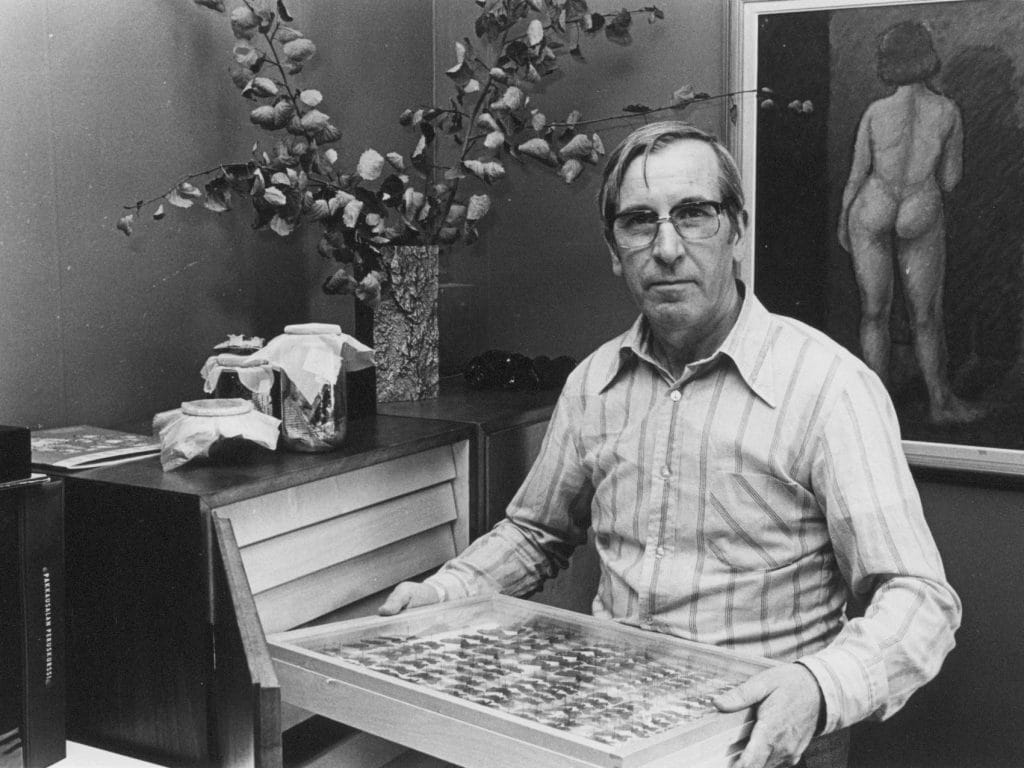The purpose of Veikko Salkio’s life’s work was to promote nature conservation and environmental education. Kieppi continues the work of its founder by spreading environmental knowledge through the hundreds of specimens in the collection.
Salkio wanted to donate his collection to all interested in nature and animals. Future generations should have the chance to experience the variety of nature: “My aim is that the collection is still on display in the year 4999.” The City of Kokkola enabled the development of the nature history collection and still finds it important.
The name of the Kieppi natural history collection was changed in 2012 into its current form: Kieppi, Kokkola Museum of Natural History. Here you will find more information about the different stages of the natural history collection and about how the other collections ended up in Kieppi.
Stages of the natural history collection
Veikko Salkio’s Natural History Collection is an extensive entity of scientific samples and specimens, created as a result of Veikko Salkio’s (1912–2006) life’s work. When Salkio arrived in Kokkola in 1980, he donated his collection to the City of Kokkola. The city enabled him to continue complementing the collection, and that is what Veikko did for the rest of his lifetime.
Aiming for a natural history museum
Taxidermy was a hobby of Salkio’s throughout his life. According to Salkio, he was just a child when he first got the idea to start a natural history museum. By the end of 1930s, Salkio had assembled a substantial collection of northern animal specimens in Petsamo. However, due to the Winter War, Salkio was forced to leave his first collection in Petsamo, where it was most likely destroyed.
Salkio explored thoroughly the natural history museums and private collections found in Finland. In 1966, Nature Conservation Supervisor Antti Haapanen authorised Salkio to take and stuff protected animals that died an accidental death, under the condition that the animals would one day be placed in a museum.
By the autumn of 1970, Salkio had collected enough samples to build a museum around them. The project progressed slowly, but finally in 1976 Salkio sold his collection to the City of Rovaniemi. However, Salkio and the City of Rovaniemi could not reach an understanding on how to manage and develop the collection, and their collaboration ended. Salkio’s second collection remained under the ownership of the City of Rovaniemi, and today, parts of it are still on display in The Provincial Museum of Lapland.
Salkio arrives in Kokkola
By the year 1979, Salkio had collected approximately 150 new vertebrate specimens and a few dozen horns and antlers. According to Salkio, he had studied a map of Finland and realised that, in terms of geography, Kokkola was perfectly located in the middle of the country. Moreover, there were no other natural history museums nearby. Salkio’s offer to hand over his natural history collection to the City of Kokkola was taken seriously. In the autumn of 1979, the Kokkola City Board decided to accept Salkio’s natural history collection, in addition to which the city granted Salkio a workroom he had requested for the purpose of complementing and maintaining his collection.
Veikko Salkio’s Natural History Collection was opened on 13 January 1982. It became obvious very early on that the exhibition cases and the facilities reserved in the salt storehouse were not enough to display the collection appropriately, nor to accommodate the visits of large school groups. Natural History Collection moved out of the confined rooms of the salt storehouse into the wide open spaces of Hagström in 1989. However, the rental facilities at Hagström were not a permanent solution for the museum. In 2000, Kieppi moved to its current location in the Museum Quarter, and the natural history collection and mineral collection both found a new home under the same roof.
Continuing and developing the museum operations
After Salkio passed away (in 2006), the task of maintaining his collection was given to Curator Paula Hyttinen, who had been involved in the development of Kieppi since the very beginning. She was familiar with Salkio’s mindset and took on the long-term development of the operations of Kieppi basing her work on Salkio’s ideals of promoting nature conservation and environmental education. The result was the creation of Kieppi’s interdisciplinary and artistic workshops, which are focused on knowledge, experiences, understanding and independent doing. Even today, natural and environmental education and free access to the scientific data included in the collections remain the foundation for all Kieppi operations.
In the early hours of 29 January 2019, Kieppi’s exhibitions and public activities were disrupted due to a fire. The fire, and the amount of water used to extinguish it, caused massive damage to the museum’s log building from 1823. Although much of the materials stored in the office and storage spaces in the wooden building were saved, the museum still lost over 400 of Salkio’s samples. The modern part of the museum building was filled with soot and smoke, but the displayed collections survived with only minor damages.
